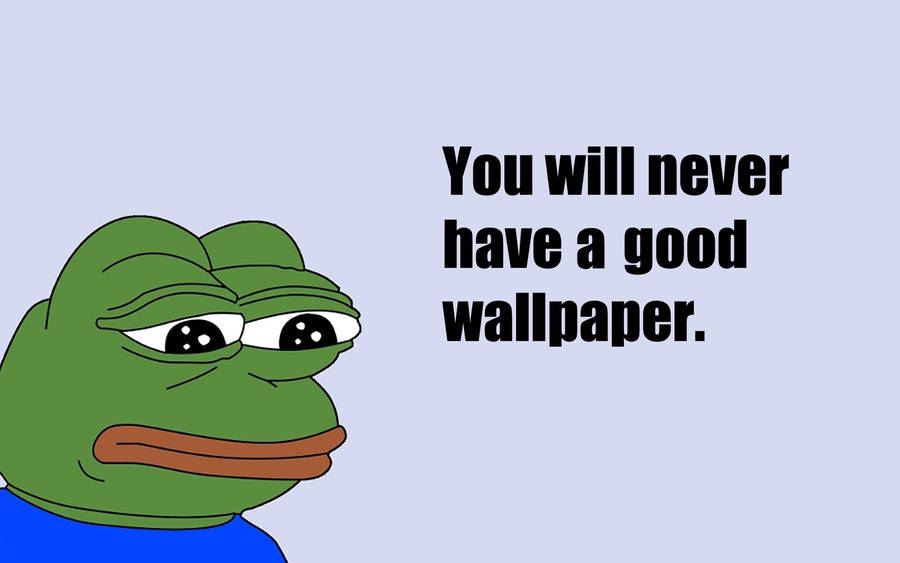So now I have all of this wonderful information funneling into my world through my coursework, professional development, fellow teachers and other resources. The information is wonderful, yet if I stuff one more piece of information directly into my brain I will forget something important like my children's names or my mother's phone number. With my limited capacity in mind, I began to explore Evernote.
Evernote has web clippers available for my smart phone, my laptop and my tablet. If I read something interesting, I can clip it, place it in a folder and tag it from any device and it shares across all devices. The number of tags a user can create is unlimited. The number of folders a user can create is large, but not unlimited. I have many tags but only two folders. My "bagged and tagged" folder holds information I have read and tagged. My "first folder" serves as a to do list calling up anything I think might be interesting, but have not had the opportunity to read and tag. I will occasionally create a folder for a specific project, specifically when sharing group work.
Designing your Evernote account from scratch begins with a considerable amount of personal reflection. I needed to create an online storage source that mirrors my thought process as a teacher. The information I create or find online, in class and through Twitter converges account in three important ways: Curriculum, literary canon and professional resources. I created an Evernote infrastructure that reflects my own divergent thought process and can grow as my resources develop.
I began my curricular organization using Inspiration 9 software to create a detailed map of the ELA Common Core Standards. This is a map of each path I need to cover within my teaching year.
The Common Core Standards for ELA are layered across four methods of communication used in English; writing, reading, speaking/listening and language. There is a considerable amount of concept repetition among the standards. For example, assessing the credibility of written material is very similar to assessing the credibility of spoken material. I combined any similar standards and created a list of each individual concept. From this list I created my first type of tag: Curriculum. Here is a sample tag:
My tag list counts the number of notes with a particular tag, making it possible to use my tag list to assess my curriculum for weak areas. For example, I currently have a large number of resources for vocabulary. However, I have very few tags with regard to informational writing making that my next area of research.
My second type of tag is a straightforward reflection of literary canon. It contains the author and title of the a piece of literature. I also file informational text about the life and times of a particular author in a general file under the author’s name. For example:
The Common Core Standards for ELA are layered across four methods of communication used in English; writing, reading, speaking/listening and language. There is a considerable amount of concept repetition among the standards. For example, assessing the credibility of written material is very similar to assessing the credibility of spoken material. I combined any similar standards and created a list of each individual concept. From this list I created my first type of tag: Curriculum. Here is a sample tag:
My second type of tag is a straightforward reflection of literary canon. It contains the author and title of the a piece of literature. I also file informational text about the life and times of a particular author in a general file under the author’s name. For example:
Lit.Twain.TomSawyer
Lit.Shakespeare.general
I can use my literary tags in the same way to determine my balance of fiction and non-fiction writing. I can also cross tag my literature and curriculum resources. For example, instead of using only Edgar Alan Poe to discuss mood and tone, I can search my Evernote for "Mood" and the results will include any mentor text I've encountered to help teach the concept. This feature adds variety to my lesson planning and is particularly helpful when trying to personalize learning across a large number of students.
My third type of tag revolves around research, best practices and professional development. There are any number of outside influences affecting my work within a classroom. My “PD” tags organize the girth of information and resources flooding a teacher’s world every day. I began my PD tags with units of study in each of my graduate courses; their expansion reflects my interests, the professional development opportunities I have enjoyed and more. Here are examples of my assessment tags:
I will need to ground my teaching in solid practices and methodology in order to serve my students and fellow teachers well. This segment of my tag population is built to grow in order to include curated information about new trends, ideas or current issues in education.
I have an enormous box in my dining room filled with lesson plans, book lists, and other information I have gleaned from my mentor teachers. With Evernote I am able to scan those resources digitally enabling me to build a working resource base and to once again have guests over for dinner. I also look forward to scanning and compiling student work to incorporate into my planning.
Evernote also gives you the ability to annotate documents and PDF's. I anticipate using Evernote to teach annotation and evidence gathering within my classroom activities. To do so will enable each of my students to design a personal knowledge base, cataloging their research across multiple grade levels as they dig deeper into each concept. But that is another blog for when I have my own classroom.
Meanwhile, Evernote is an important part of my growth and reflection as a teacher.
Pd.assess.MC
Pd.assess.Formative
Pd.assess.standard
I will need to ground my teaching in solid practices and methodology in order to serve my students and fellow teachers well. This segment of my tag population is built to grow in order to include curated information about new trends, ideas or current issues in education.
I have an enormous box in my dining room filled with lesson plans, book lists, and other information I have gleaned from my mentor teachers. With Evernote I am able to scan those resources digitally enabling me to build a working resource base and to once again have guests over for dinner. I also look forward to scanning and compiling student work to incorporate into my planning.
Evernote also gives you the ability to annotate documents and PDF's. I anticipate using Evernote to teach annotation and evidence gathering within my classroom activities. To do so will enable each of my students to design a personal knowledge base, cataloging their research across multiple grade levels as they dig deeper into each concept. But that is another blog for when I have my own classroom.
Meanwhile, Evernote is an important part of my growth and reflection as a teacher.
My Current and Ever Expanding Tag List
Curricular Resources Based on CCSS.
curr.figurative,
curr.figurative.aliteration,
Curr.info.analysis,
curr.info.comprehension,
Curr.info.integration,
Curr.info.organization,
curr.info.planning,
Curr.info.research,
curr.info.text,
Curr.Lit.games,
Curr.Lit.Tech,
Curr.media.interp,
Curr.Media.use,
Curr.narrative.characters,
Curr.narrative.context,
Curr.narrative.events,
Curr.narrative.POV,
Curr.narrative.structure,
Curr.narrative.theme,
curr.poetry,
curr.rich.general,
curr.shortstory,
Curr.Speaking.group,
Curr.Speech,
Curr.Speech.graduation,
Curr.theater,
Curr.vocab.etymology,
Curr.vocab.figurative,
Curr.vocab.linguistics,
Curr.vocab.nuanced,
Curr.vocab.phrases,
Curr.vocab.reference,
Curr.vocab.words,
curr.wp,
Curr.WProcess.development,
Curr.WProcess.planning,
Curr.WProcess.prompts,
Curr.WProcess.structure,
Curr.WProcess.style,
Curr.WProduct.context,
Curr.WProduct.editing,
Curr.WProduct.grammar,
Curr.WProduct.publishing,
Curr.WProduct.rewriting,
Curr.WProduct.wordchoice,
Curr.Writing.tech
Literary Resources/Mentor Texts
Lit.Auden.Funeralblues,
Lit.Austin.general,
lit.Bierce.Devilsdisctionary,
lit.bradbury.dandelion,
lit.bradbury.general,
lit.bradbury.wicked,
lit.bukowski,
lit.cabrera.rudy,
Lit.cervantes.Quixote,
Lit.Chaucer.General,
Lit.Collins.HungerGames,
Lit.Conrad.Heartdarkness,
Lit.Dante.DivineComedy,
lit.doyle.baskerville,
Lit.Dubois.letters,
Lit.Einstien.letters,
Lit.eliot.lovesongprufrock,
Lit.Elliot.AncientMariner,
Lit.Fable,
lit.ferlinghetti.11,
Lit.Fitzgerald.Gatsby,
lit.frost.roadnottaken,
lit.gaiman,
Lit.general,
Lit.Gibran.Autumnleaves,
Lit.Gibson,
lit.gray.churchyard,
Lit.GreekMythology,
Lit.Hemingway.general,
Lit.Jones.Marshall.touchscreen,
Lit.Kafka.general,
lit.kaplan.lincoln,
Lit.Kivi.SevenBrothers,
Lit.Lee.Mockingbird,
Lit.Lewis.General,
lit.lovecraft.general,
Lit.Lowry.Giver,
Lit.mcmanus.grasshoppertrap
Lit.Melville.Mobydick,
lit.miller.crucible,
Lit.mythology,
Lit.Nash.Isabel,
Lit.Nietche,
Lit.Orwell.Animalfarm,
Lit.Parody,
lit.plato.republic,
Lit.Poe.CaskAmontillado,
Lit.Poe.General,
Lit.Poe.Raven,
Lit.Poe.Telltale,
lit.rand.general,
lit.scifi,
Lit.Seuss.GreenEggs,
Lit.Shakespeare.general,
Lit.Shakespeare.Hamlet,
Lit.Shakespeare.JuliusCasear,
Lit.Shakespeare.MacBeth,
Lit.Shakespeare.MuchAdo,
Lit.Shakespeare.RomeoJuliet,
Lit.Shakespeare.Tempest,
Lit.Shakespeare.Tempest,
lit.Shelley.Frankenstein,
Lit.Silverstein,
Lit.Stockton.LadyTiger,
Lit.Thoreau.Walden,
Lit.Tolkein.LOTR,
lit.turing,
Lit.Twain.general,
Lit.Twain.HuckFinn,
lit.urban.johncougar,
lit.verne.80days,
lit.waites,
lit.wallace.general,
Lit.Watterson.CalvinHobbes,
lit.whitman.captain
Professional Development Topics
pd.accom,
PD.accom.ADHD,
PD.accom.aut,
PD.Accom.dislexia,
PD.accom.ELL,
PD.accom.gifted,
PD.accom.loss,
PD.accom.OG,
PD.assess.essay,
PD.assess.MC,
PD.assess.project,
PD.assess.stand,
PD.assess.tech,
PD.assessment.data,
PD.Authentic,
PD.blended,
PD.booklists,
PD.Civicengagement,
PD.class.culture,
PD.class.culture.bullying,
PD.class.culture.character,
pd.class.culture.cheating,
PD.class.culture.conflict,
PD.class.culture.grit,
PD.class.decor,
PD.class.discipline,
PD.class.man.tech,
PD.class.managementplan,
PD.class.organization,
PD.clipart,
PD.collaboration.strategy,
PD.collaboration.tech,
PD.communication,
pd.crossover.history,
PD.Crossover.Math,
pd.decor,
Pd.engagement,
PD.freeresources,
Pd.gaming,
PD.innovation,
Pd.inquiry,
PD.lessonpan.strategies,
PD.lessonplan.graphorg,
PD.lessonplan.ideas,
PD.lessonplan.search,
PD.lessonplan.tech,
PD.lessonplan.tech.flipped,
PD.opensource.resources,
pd.personalized,
pd.projectbased,
PD.reading.strategies,
PD.reading.tech,
PD.reflection,
PD.RTI,
pd.tech.blended,
pd.tech.blog,
Pd.tech.digitalcitizenship,
Pd.tech.resources,
pd.tech.video,
Pd.tech.webdesign















